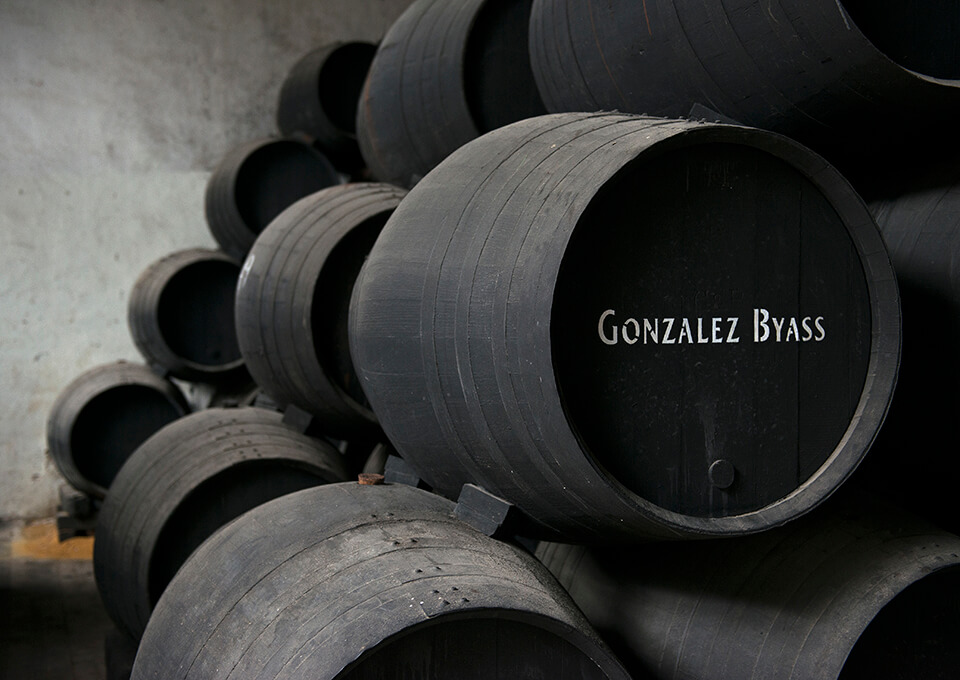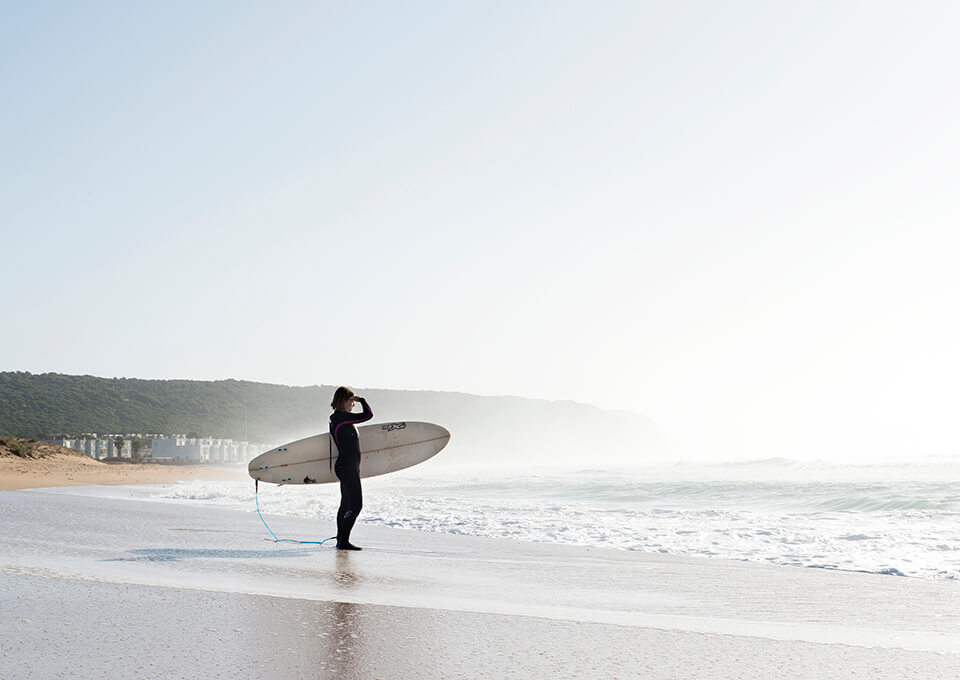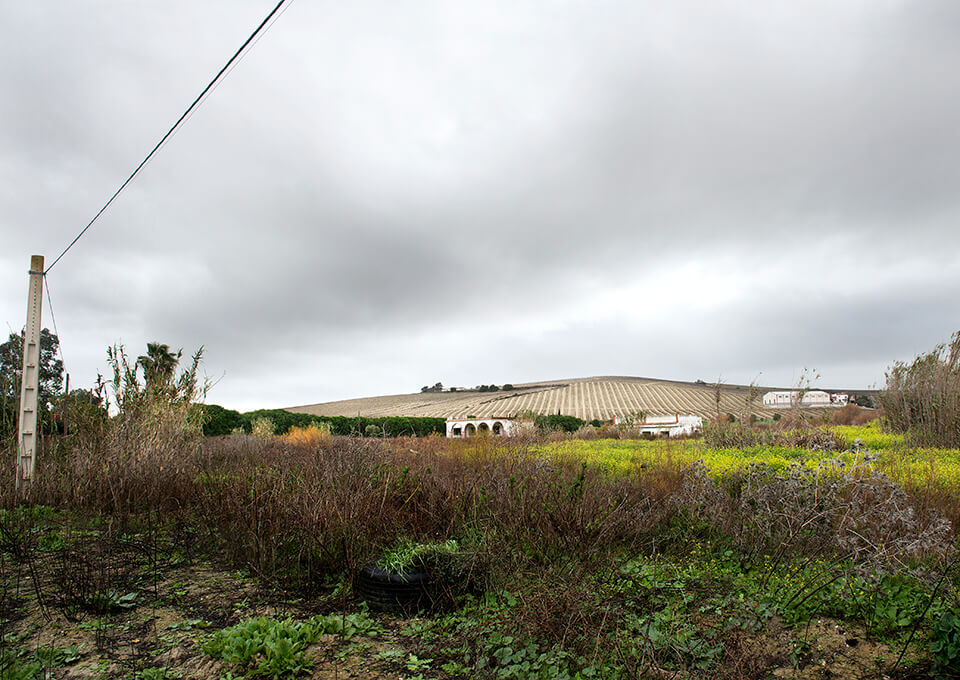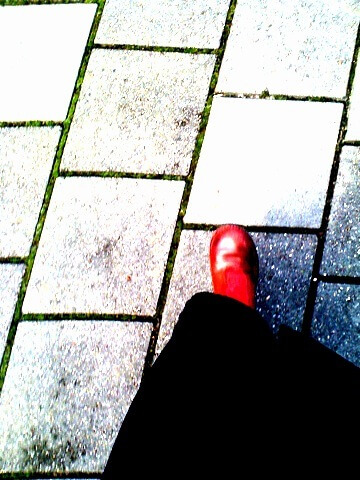You can still hear the wailing ayyys of past centuries and lost loves. Jerez de la Frontera, capital of flamenco and wine. We went in search of the soul of flamenco and found it in Moroccan tea houses, in graveyards and between barrels full of sherry.
Flamenco road trip
Sitting on the tomb is Spain’s most famous son of flamenco, Camarón de la Isla. Likewise in marble. Hands held loosely on the thighs.
He has been dead for 21 years, but is more alive than ever. His grave in San Fernando, just outside Cádiz, is still visited daily by countless flamenco-lovers. Sometimes they fall weeping onto the cold stone. “Ayy” is what you hear then echoing through the cemetery.
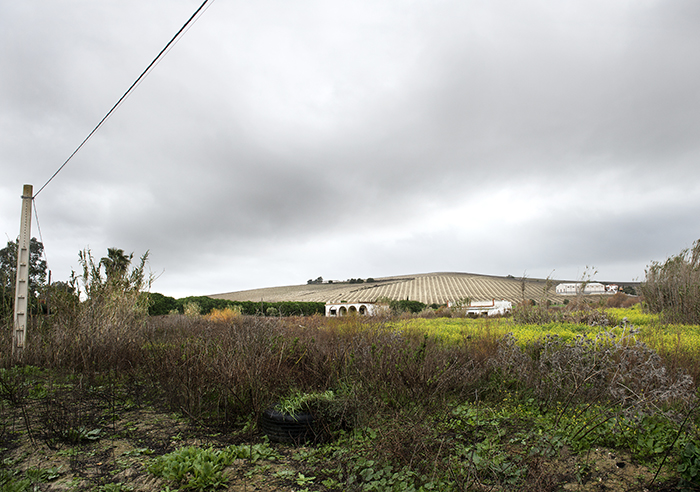
Camerón de la Isla
The cats sitting on the graves gave up reacting long ago. “The legend began the day Camarón died,” says Ana the guide. What is it about flamenco? The folk music with its Arabic and Jewish influences, performed by gypsies and payos, which has held southern Spain in its grasp for centuries.
With arm movements that originated in India, lyrics mixed with lamenting wails, poems by Lorca and dashes of blues, jazz and folk?
Duende
“Once you are touched by flamenco, it will never let you go”, says flamenco expert Francisco Perujo the following day in Cádiz. He’s waiting for me in the Peña Flamenco club. Smartly suited up, he looks as if he would be more at home at the opera than here among ancient old men with handkerchiefs in their top pockets.
“It comes from the duende.
Duende makes people cry, it makes men rip their shirts. That’s what causes the goose bumps when you hear a musician perform.”
On the coast road travelling westwards from Tarifa, I turn the knobs on the radio in search of a flamenco station. There are horses grazing in groups alongside the road. Javier Ruibal flows out of the speakers. Talk about goose bumps!
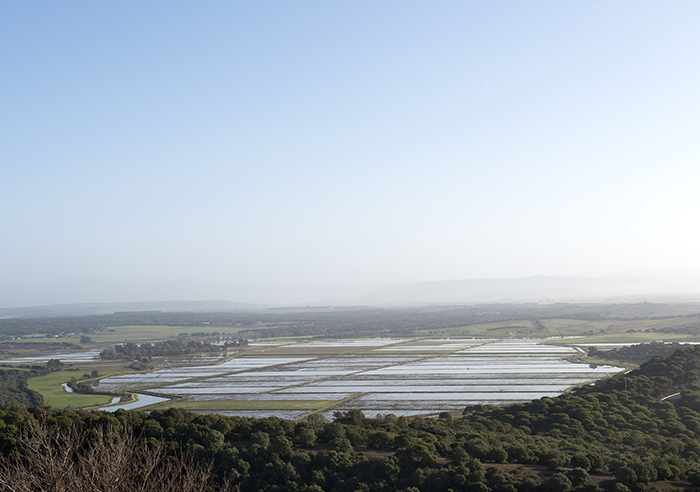
Javier Ruibal
The troubadour from the Bay of Cádiz sings about secretly stroking his first love’s legs in cine Macario, while Franco’s biting political wind blew through wretchedly poor Andalucía. Ruibal is one of those singers who doesn’t perform flamenco in its pure form, but uses it as a framework to fill with Arabic sounds, folk and blues.
“I remember that in the time of Franco, we used to turn the radio antenna round and round for hours in the hope of picking up something from outside Spain. Sometimes we heard a little Arabic, or African or a bit of folk. Those fragments have marked my music,” he tells us during lunch in Jerez.
The flamenco’s memory
“A Roma, no quiro ir” he sings. Just as well. We don’t want to go to Rome, because we’re on our way to Jerez de la Frontera. People have sworn to us that the soul of flamenco lies in Jerez. But we’re not there yet, we’re in Tarifa, the southernmost point of Spain.
Morocco beckons on the other side of the water. We are enveloped in the green of the Spanish spring and guided by windmills, whose arms are turning enthusiastically as if they want to encourage us: véte, go! To Cádiz, to Jerez.
After Tarifa, suddenly there is the Atlantic Ocean. The water is clear blue against the fresh green of the land. We had expected a barren, dry region. Is this the land of the flamenco? The olés? The duende? It looks like Ireland.
Rain spatters on the roof. Takke-takke-tak like the taconeo the flamenco dancers use to drum their feet. There are houses with arcades, the odd chicken and mimosa painting the side of the road exhilarating yellow.
Carcelera
And then suddenly, there is Vejer de la Frontera. Brilliant white and perched on a rock. An old Moorish city with winding alleyways full of orange trees and a fountain inlaid with mosaics. Somewhere a church bell strikes noon tinnily. In a courtyard a woman is hanging up the washing.
Strangely enough, she’s singing a carcelera. A lament grafted onto prison life. The lover is in jail and sees the sadness etched into her eyes and her soul in the light of the full moon. I think about clapping along, but don’t dare, for fear of getting the laundry basket thrown at me.
Venta de Vargas
Shortly before Cádiz, we stop in San Fernando. This is where the Spanish flamenco legend Camarón de la Isla was born. Restaurant Venta de Vargas, which has been serving flamenco and food since 1924, is the place to be if you want to know more about the singer, who died young.
“This is the Vatican of the flamenco”, says Ana with a certain amount of pathos. “Camarón was famous for his exceptional voice and his duende but he was also an innovator, including poems by Lorca. He was performing here when he was only eight years old.”
Vatican of flamenco
The walls are full of photos of the flamenco prince who died of lung cancer aged 42. When I peek under the tablecloth, I see that the tables are inlaid with scenes from the flamenco world. “You can eat his favourite dish here,” says Ana. I hazard a guess: “Shrimps?”, because of his nickname camarón, which means shrimp. Ana shakes her head. “No, he loved Berza Gitana, a traditional gypsy pork stew.”
Mick Jagger
An old gypsy comes over to get a drink. Did we know that Camarón once swapped his underpants with Mick Jagger? It’s time to follow the coast to Cádiz. Europe’s oldest city, like an arm and hand tickling the Atlantic, attached only by a wafer-thin strip of land.
Rows of dunes screen the sea and lead us to the seaport. From time immemorial various different peoples have washed ashore here, who would all make a contribution to the flamenco.
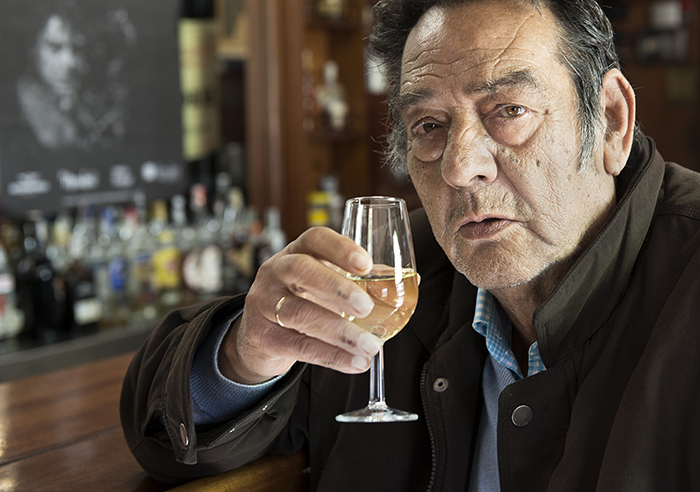
Santa María is a beautiful but poor working-class district near the harbour, where a flamenco artist was born into almost every household. The sea provides the background decor. La Merced was once the covered market in Cádiz, but now it is a centre where everyone can practise flamenco free.
Music of the poor
Young children in black swarm around us. Within a few moments, the girls have thrown their arms up above their heads, with their fingers ready to snap. “The centre has been popular since the economic crisis hit hard here. Many families don’t have work or money and as a distraction they throw themselves into the flamenco. It has always been the music of the poor”, according to Jorge who runs the centre.
We settle in at Sorpranis for a plate of salmorejo, a puree of bread and tomatoes. Mayca from Cádiz pulls up a chair beside us. On the street, people are hurrying through the alleyways. Her Arabic appearance makes me suspect she has Moorish ancestors.
“No idea”, she says. “This city is a mishmash of the people who arrived at the port and left again for South America from here.” One thing she does know is that the flamenco was influenced by the ladies from Cádiz.
Dancing of the gypsies
“That’s because we were very good at two things: dancing and crying!” Pardon me? “Yes, they say that our dancing reached the gypsies via the Romans. And besides, the ladies of Cádiz were highly popular everywhere as wailing women. She demonstrates briefly: “Ayyyy.” It reminds me of Ana at the grave.
We wander through the city. Climb the Torre Tavira, once the look-out tower to see if the ships from the New World were already approaching. The people walking through the narrow streets are small from here. The harbour lies at our feet, as does the Cádiz beach. The sea rolls up foaming against the salmon-pink city centre.
Bulería about Cádiz
“The beach and a surplus of unemployed musicians, that’s all we have left”, was how Ruibal typified Cádiz during his performance the evening before. He had played a bulería. In spite of all the doom scenarios, the public had immediately started clapping. Spanish hands can find the rhythms blindly.
We don’t see any musicians, but there are a few fishermen pushing their boats out to sea. It’s time for Jerez de la Frontera.
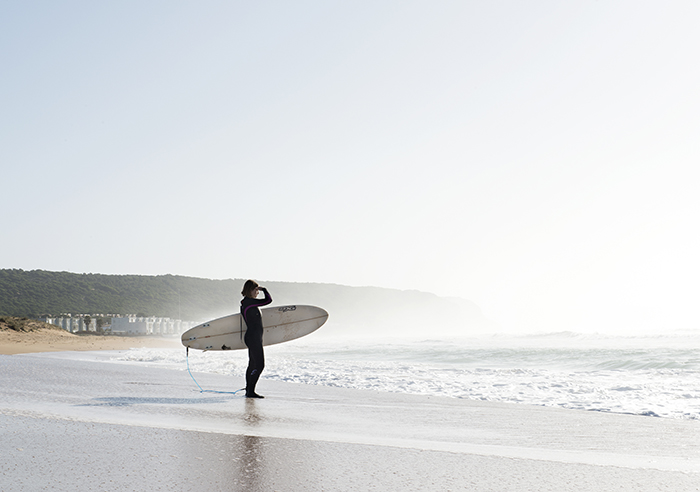
The name suggests that it’s a border town, but Jerez is situated inland and la Frontera was once the boundary between Catholic Spain and the Moorish world. We are ready for a sherry and report to the Gonzales Byass bodega where Tio Pepe is made. No flamenco for a while.
Sherry
But no flamenco for a while is not an option in these parts. A rhythmical tapping swells up between the oak barrels and a little later there are ladies drumming their way over a catwalk among the sherry. The maker’s premises are the stage for the annual flamenco fashion show. I had no idea, but the polka dots on the dresses are also subject to trends.
We cross an invisible border and come through the alleyways of the Jewish quarter onto the Plaza Plateros. We have arranged to meet up with singer Javier Ruibal in the Casa Gabriela bar, where the motto is: “We don’t close until you’re satisfied.”
Local delicacies
That could be faster than intended because Juan-Antonio, the owner, is flapping about around us and organizing local delicacies. Tomatoes, kidneys in sherry, meatballs in almond sauce that appear one after the other on the table. Just like the wine and the manzanilla. “Foreign visitors and a famous singer, all on one day”, the owner grins. “It’s as if I’ve landed in heaven.”
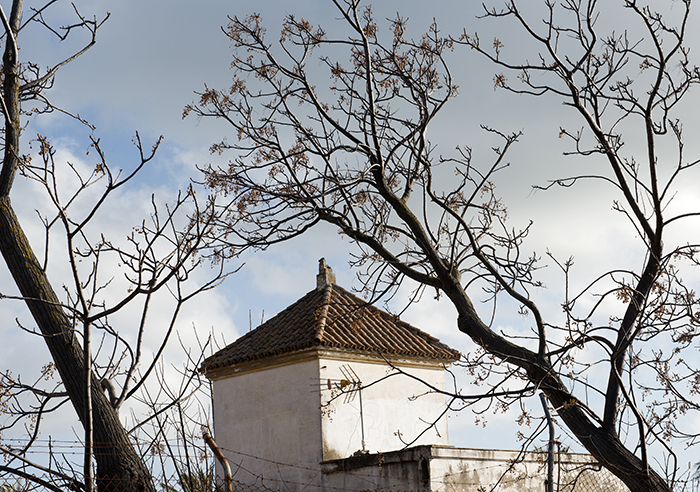
Dictatorship and freedom
The Moors knew a thing or two about heaven as well. The Alcazár towers out of the Arab defensive fort above the Jewish quarter. With inner courtyards filled with palms, jasmine and orange trees. That was what paradise should look like, the Moors knew, and created a portal that resembled it.
Between mouthfuls, Ruibal talks about growing up as a child under a dictatorship and a guitar that represented freedom. About the harbour city of Cádiz that was the gateway to the rest of the world. About a mother who sang flamenco while doing the housework, like so many mothers.
Flamenco is elastic
“Flamenco was the only music that was allowed during my childhood. It still represents my basis, but this music is elastic, you can stretch it out or add something. It is timeless.” It’s a Spanish afternoon. Outside, the rain is drizzling, but here there is music, the wine is flowing and people are talking loudly to each other.
We dive into San Miguel, a gypsy neighbourhood. Flamenco was part of everyday life in Spain until well into the 1950s. Every event, whether it was a wedding or the birth of a child required its own bulería or tango. If you were rich, you hired in gypsies to enhance a juerga, a party.
In Jerez and Cádiz the gypsy neighbourhoods are synonymous with working-class districts. Gypsies and payos, the non-gypsies, live intermixed. Flamenco is not reserved for gypsies either, as Lola Flores demonstrated when she settled down in this neighbourhood among the gypsies and became a famous flamenco singer.
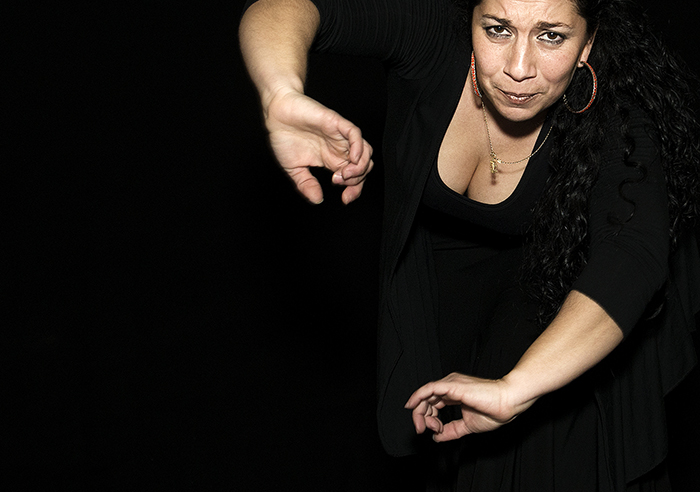
However, Vincenta Caldéz is a Roma and performs in a Moroccan tea house. While the audience sips tea or sherry, seated on brightly coloured cushions, the sound of the first touch of the strings can be heard. It’s the signal for the singers to start clapping. “Ayyyy” is the sound.
The dancer is standing motionless in a corner. And then with a few strong stamps on the floor, she comes to life. She taps, she shakes, she implores, she whirls across the floor. “Ayyy” is still the sound. A white triangular scarf whirls along with her and closes around her. Then she appears again like a flower emerging from the bud. “Olé”, the audience fervently encourages her.
Centuries long hardship
Her dance tells the story of centuries-long hardship and persecution, but also of an art that changes constantly. That survives. “No-one can teach you this”, she says afterwards. “This has been in me for generations.”
In San Fernando, Ana strokes the cold marble of Camáron’s grave and then begins to sing flamenco in an ethereal voice. With her knuckles, she taps out the rhythm on the grave. Ayyy, thank you so much for coming to the lovely district of Santa Maríayayy”, she sings. And then stops abruptly. A tear glistens on her cheek.
This report was nominated for the 2014 Spanish Press Awards and published in Grande magazine – 2014
Text: Anneke de Bundel – Images: Nicole Franken
Translation: Christine Gardner
Practical information:
- For Cádiz and Jerez fly to Seville or Malaga.
- In Cádiz eat at Sopranis Restaurant
- Tapas in Jerez Casa Gabriela.

